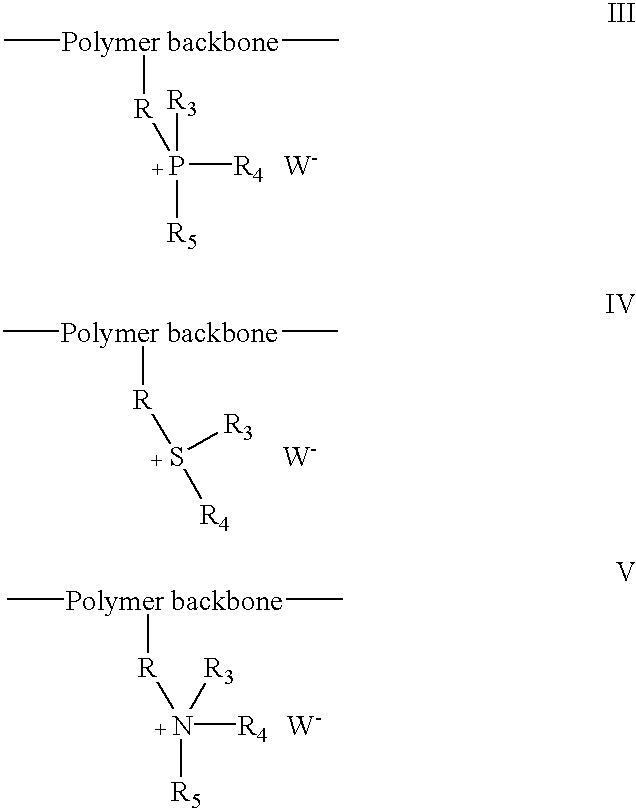Thermal switchable composition and imaging member containing oxonol IR dye and methods of imaging and printing
a technology of oxonol ir dye and composition, applied in thermography, photosensitive materials, other chemical processes, etc., can solve the problems of difficult coating, high laser power required for ablation, and high cost of components of such printing plates, so as to maximize image resolution capability, increase photospeed, and maximize energy utilization
- Summary
- Abstract
- Description
- Claims
- Application Information
AI Technical Summary
Benefits of technology
Problems solved by technology
Method used
Image
Examples
example 2
A printing plate of this invention was found to exhibit greatly reduced gaseous effluents upon imaging.
Identical plates were prepared as described in Example 1 except that the vacuum system of the plate setter was deliberately shut off during laser imaging. Samples of the two imaged plates (1000 mJ / cm.sup.2 at 830 nm) were carefully placed inside special headspace vials immediately after laser imaging. Dynamic headspace analysis was carried out by purging with a stream of helium and condensing the effluents with liquid nitrogen. The trapped volatiles were identified by GC / MS instruments. The results are summarized in TABLE II indicate that gaseous effluents, especially sulfur-containing volatiles, were eliminated, or greatly suppressed by the use of the present invention.
TABLE II Comparative Invention bp Volatile Example 1 Example 1 (.degree. C.) Chloromethane trace none -24 Carbon disulfide large at least 20x less 46 Carbonyl disulfide large at least 10x less -50 Methyl mercaptan t...
example 3-7
Printing Plates Containing Other Oxonol IR Dyes
The following printing plates of this invention were prepared and used in printing as described above in Example 1. The imaging layers in the printing plates contained the oxonol IR dyes in TABLE III below. Each printing plate was successfully imaged without an unbearable sulfur smell and was used to produce 1,000 printed sheets of good quality on the A. B. Dick press.
TABLE III Substituent R.sub.7 IR group on Structure .lambda..sub.max Photospeed Cation.sup.a Example Dye DYE (nm) OD.sub.830 (mJ / cm.sup.2) (M.sup.+) Comparative 1 A 800 0.55 450 None Invention 1 1 ##STR33## 850 0.75 <360 TMG.sup.+ Invention 3 2 ##STR34## 850 0.85 <360 TEA.sup.+ Invention 4 3 ##STR35## 850 0.78 <360 TEA.sup.+ Invention 5 4 ##STR36## 760 0.45 450 TEA.sup.+ Invention 6 5 ##STR37## 860 0.35 <450 PyH.sup.+ Invention 7 6 840 Not available 450 TEA.sup.+ .sup.a TMG.sup.+ : tetramethylguanidinium ion, TEA.sup.+ : triethylammonium ion, PyH.sup.+ : pyridinium ion.
PUM
 Login to View More
Login to View More Abstract
Description
Claims
Application Information
 Login to View More
Login to View More - R&D
- Intellectual Property
- Life Sciences
- Materials
- Tech Scout
- Unparalleled Data Quality
- Higher Quality Content
- 60% Fewer Hallucinations
Browse by: Latest US Patents, China's latest patents, Technical Efficacy Thesaurus, Application Domain, Technology Topic, Popular Technical Reports.
© 2025 PatSnap. All rights reserved.Legal|Privacy policy|Modern Slavery Act Transparency Statement|Sitemap|About US| Contact US: help@patsnap.com



